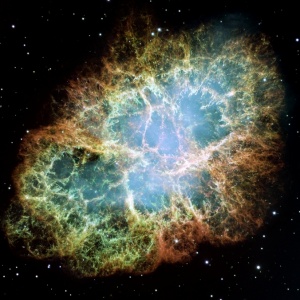Aurora is on version 2.5.0 C#, available at the Aurora Forums.
Contact Erik on the forum for a wiki account.
Difference between revisions of "Nebulae"
| Line 1: | Line 1: | ||
[[File:Crab Nebula small.jpg|thumb|NASA:[https://en.wikipedia.org/wiki/Crab_Nebula Crab Nebula]]] | [[File:Crab Nebula small.jpg|thumb|NASA:[https://en.wikipedia.org/wiki/Crab_Nebula Crab Nebula]]] | ||
| − | '''Nebulae''' are clouds of gas and dust which form in interstellar space. A Nebula [[system]] | + | '''Nebulae''' are clouds of gas and dust which form in interstellar space. A Nebula [[system]] poses challenges for ship combat: it prevents the use of [[shields]] and [[missiles]], disrupts [[sensors]] and increases fuel consumption. |
==Overview== | ==Overview== | ||
Revision as of 14:21, 7 April 2016

Nebulae are clouds of gas and dust which form in interstellar space. A Nebula system poses challenges for ship combat: it prevents the use of shields and missiles, disrupts sensors and increases fuel consumption.
Overview
These appear as a normal system, albeit with a paler background, and will have a single protostar at the centre. The protostar itself will be based on a main sequence star or red dwarf and will have a greater diameter and lower luminosity than its main sequence equivalent. Some protostars will be close to ignition, in which case they will be close to their eventual equivalent in terms of size and luminosity while others may be in the early stages of star formation and might be huge with a very low luminosity. The dust cloud surrounding each protostar (the Nebula) will extend for trillions of kilometers in all directions (if you are in the system you are in the Nebula) and will have a specific dust density, referred to as the Nebula Leve). For early protostars the dust density will be much higher than for those close to ignition.
Generation
Protostars will generally have a low number of orbital shells, certainly no more than six, over half of which will be asteroid belts, representing material that has not yet coalesced into planets. The rest will be chunks, gas giants and an occasional rare terrestrial size world. These system bodies will generally have more minerals at higher accessibility then normal.
The Nebula Level will be generated as 1-5 and then a loop will begin where there is a 50% chance to either add D5 more levels or exit. So 50% of Nebulae will be 1D5 Nebulae, 25% will be 2D5, 12.5% will be 3D5, etc.
When exploring from a Nebula system there is a 50% chance of the next system will also be a Nebula of the same dust density. This will create Nebulae spanning multiple star systems, making them a feature of a region of space rather than an occasional system.
Note: Nebulae system will only generate (automatically or manually) if the Known Stars (formerly called Real Stars) setting is toggled off in game setup.
Effects
All Nebulae prevent the use of shields and missiles. Beyond that, the Nebula Level has several effects:
- Max ship speed is 2500 / Nebula Level * Armour Thickness. For example, a ship with armour thickness 1 in a Level 5 Nebula, will have a maximum speed of 2500/5 * 1 = 500 km/s. If the armour was thickness 2, the top speed would be 1000 km/s. Note that missiles with armour still won't function in a Nebula as the armour is ablative and designed for use against lasers.
- Passive Sensor strengths are divided by the Nebula Level. For example, a Strength-12 Thermal sensor in a Level 6 nebula would function like a Strength-2 Thermal Sensor
- Active Sensor Ranges are divided by the Nebula Level. For example, an active sensor with a range of 30 million kilometers in a Level 10 Nebula, would have a range of 3 million kilometers.
- The chance to hit for all beam fire control systems is divided by the Nebula Level. For example, if a fire control has a 60% chance to hit after all other factors have been considered, that will be reduced to 15% in a Level 4 Nebula or 5% in a level 12 Nebula. It's assumed that beam weapons are powerful enough to ignore the dust with little effect but getting their fire control to lock on the target is the tricky part.
Fighting in Nebulae will be a case of trying to find your opponent, probably at close range, and then using your still powerful beam weapons with heavily degraded fire control against a shieldless target.